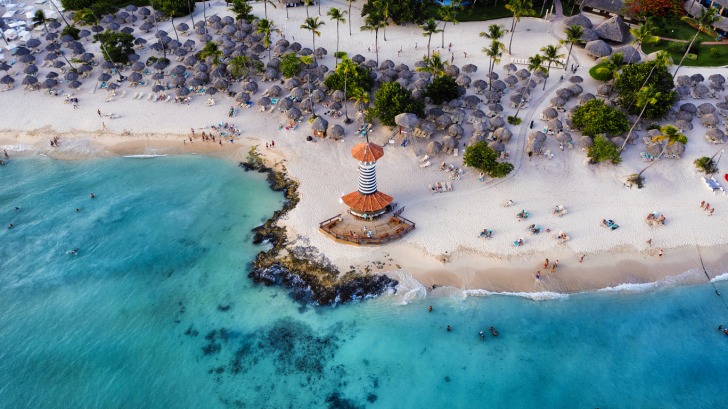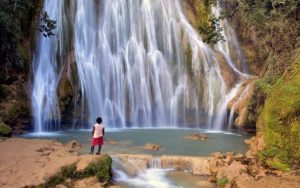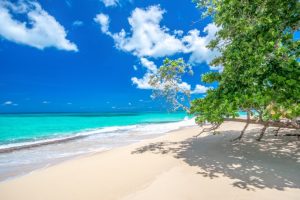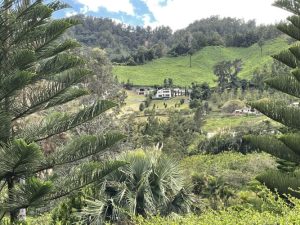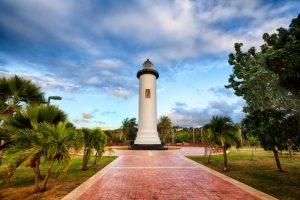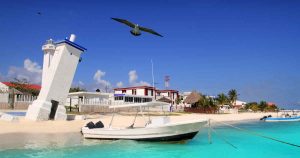 Dominican Republic : Safety by City
Dominican Republic : Safety by City
Dominican Republic - safety as a country On the extreme eastern edge of the Dominican Republic is a Caribbean beachfront town just a hop, skip, and jump from Puerto Rico.
Though this fishing village has been around since the latter half of the 19th century, there are less than 6,000 residents who call Bayahibe home.
Mainly, this narrow strip of land is viewed as a vacation destination.
It’s not hard to see why.
The waters are sparkling turquoise and calm.
Thanks to those attributes, families are often attracted to the sandy shores throughout the year.
Even more family-oriented might be the lack of nightlife.
Whatever it is that brings interested vacationers to this part of the Caribbean, there are plenty of activities to keep everyone busy.
But how safe is it?
Warnings & Dangers in Bayahibe

OVERALL RISK: MEDIUM
There is not a lot of risk involved when traveling to and staying in Bayahibe when it comes to crime. The locals are a tight-knit community who are very welcoming toward visitors. Most of the petty crimes can be avoided by taking precautions. What you mostly need to worry about are the potential acts of god that can ruin not only a trip but an entire neighborhood or more. Oh, and don't drink the water.

TRANSPORT & TAXIS RISK: LOW
The biggest risk you can expect to run into with public transport is getting a driver you can't communicate with. In a country of 10 million, only about 15,000 speak English. So, to avoid miscommunications, learn some Spanish or bring a translator.

PICKPOCKETS RISK: MEDIUM
The greater Dominican Republic is considered one to be extra careful in. Crime rates in the country, overall, are pretty high. Fortunately, this is not the case in Bayahibe. However, pickpocketing is something that does happen from time to time. It should not be something to put a whole lot of extra concern into. Just make sure when you're visiting to be extra cautious and aware of who is around.

NATURAL DISASTERS RISK: HIGH
This is another good time to plan in advance and keep on checking the maps before leaving. As with most coastal towns, there is a risk. In Bayahibe, there are several. For starters, hurricanes. The time for that encompasses both summer and autumn. Late summer tends to be the peak of the problem. With hurricanes, flooding often follows. This happens both because of the weather and the changing climate. Flooding can lead to mudslides and eventually erosion. You might also be surprised to learn that the Dominican Republic also gets earthquakes. Just when you think that should be it, and it should, the list goes on. Droughts, tropical storms, tsunamis, and even landslides are a potential risk.

MUGGING RISK: MEDIUM
Things like purse snatching happens in Bayahibe. Similar to pickpocketing, mugging and crimes like it are not commonplace. It's still smart to remain vigilant when out and about.

TERRORISM RISK: LOW
While there aren't any direct acts of terrorism happening in the Dominican Republic, the US Embassy has posted a notice. Due to some counterterrorism by the USA, they are cautioning everyone traveling internationally to be extra careful. As with all terrorism, you don't necessarily know when or where it will strike. So, before arriving in the DR, check the embassy website for any updates or info in case the worst happens.

SCAMS RISK: MEDIUM
Some scams are easy to spot from a mile away and others look like normal day-to-day operations. For example, dating scams are happening more and more across the Dominican Republic. This is something that happens before you get there. Locals lure prospective love interests with promises that can't be kept upon arrival. Sometimes, the local doesn't even show up at the airport. This, of course, most often happens after money has been sent by the traveler over a period of time. Another involves pictures. If someone is seemingly local and asks you to take a picture of them, walk away. They might drop the camera upon return and demand you pay them for damages. Lastly, if you need to go to an ATM, you may want to avoid ones on the outside of a building. Go inside because it's possible a device has been inserted into one that isn't being monitored. This allows scammers to get your info and withdraw money.

WOMEN TRAVELERS RISK: LOW
When it comes to females, including those flying solo, Bayahibe is considered safe. Some would even say that it's the safest place for women in all of the Dominican Republic. Luckily, that means women coming to enjoy paradise in the Caribbean can sleep soundly knowing there's nothing to fear.

TAP WATER RISK: HIGH
As tempting as it might be to reach out and grab a glass of water in your hotel room, try to avoid doing so. There might be plenty of places, including your hotel, that have perfectly drinkable water. The reality is, though, that there is no good way of knowing who treated their water. Bayahibe has too much of a mix of places that do and don't properly treat water. Of course, the last thing you want during a stay in paradise is an upset stomach. That goes for toothbrushing as well.
Safest Places to Visit in Bayahibe
Resorts are the safest places in Bayahibe.
There is an entire police force dedicated to tourism in the Dominican Republic.
Anywhere tourists are will be more heavily guarded than anywhere else.
Places to Avoid in Bayahibe
Straying too far from a resort or tourist area could do more than make you uncomfortable.
While crime is unlikely during a visit, petty crimes are the ones that happen most often.
Don’t be alone near strangers far from where you’re staying.
Safety Tips for Traveling to Bayahibe
- Get Familiar. Before taking off for the Dominican Republic, take a moment to print out a map. We say print because reception and a good charge are never guaranteed. Before printing, zoom in close enough to be able to see the area you’ll be staying in. Don’t hesitate to print more than one map in order to get more detailed.
- Buy Bottled. As you may have read already, tap water is not reliably drinkable in Bayahibe. So, what’s a tourist to do? Bring your own supply! Whether at the airport, hotel lobby, or a convenience store around the corner, get a case of bottled water. That goes for any other drink you plan to enjoy while visiting. Having your own water lessens the risk of getting a bubble gut by quite a lot. Typically, you can expect water to be pretty budget-friendly. Have plenty around and take at least one with you while out. In case you were wondering, no, don’t use ice in your drink. Also, you’ll need to use bottled water to brush and rinse your teeth.
- Learn Phrases. The national language is Spanish. While there are several languages spoken in the DR, it’s more likely a child can speak English to you than another adult. So, to avoid any accidental mishaps, brush up your language skills. No, it’s not mandatory to learn a whole language every time you visit another country. Learning enough to get around should not be expected by anyone other than yourself. If you have a tough time with languages, download an app. Most of these apps will not only translate for you but also speak the words. Even if the translation isn’t perfect, locals will most likely be able to get the gist of your intention. It wouldn’t hurt to make a list of common phrases you might need and keep them in your pocket, with the map. If you have an interest, getting a pocket Spanish dictionary might be useful, too.
- Lose the Bangles. There shouldn’t be any loose items hanging from your body. Whether they’re worth anything or not, dangling jewelry catches attention.
- Color Code. Once you are able to pinpoint the hotel on a map, also locate the police station and hospital and put a dot next to them. In another color, put dots for restaurants, shops, and the excursions you plan to take. Find a place to stash the map(s) so they are accessible at all times. So, in case of an emergency or a hangry attack, you won’t have to go searching at inopportune times.
- Have Outsiders. On the long drive from the airport to Bayahibe, connect with someone from home. It doesn’t have to be immediate, but before arriving, pull up a video call. That way, in case of any funny business, the driver will know someone is documenting your actions.
- Keep Connected. Have one or two people back home with your location at all times. It won’t always be 100% accurate, but it’s the best you’ll have in case of a situation going south.
- Don’t Fall in Love. With the beach, that is. If you end up staying over 30 days, that could mean trouble for you at the embassy.
- Stranger Plans. If you happened to ignore the scams section, and you’re in the DR to meet someone, do yourself a favor. Come up with two itineraries. One for if the person shows up and another in the event they don’t.
- Pack for the Weather. Not only should you be checking the changing weather daily, but you also need to pack just in case.
So... How Safe Is Bayahibe Really?
Sometimes, rural areas can be a safe haven for criminal activity.
Or even worse, a corrupt local government.
Fortunately for travelers, Bayahibe is not one of those places.
It just so happens to be in a country that’s not particularly trustworthy.
Expect to be safe in town as long as you plan ahead, know how to seek out emergency services, and drink bottled water.
How Does Bayahibe Compare?
| City | Safety Index |
|---|---|
| Bayahibe | 52 |
| Punta Cana | 64 |
| Santo Domingo | 31 |
| Sosua | 77 |
| Samana | 78 |
| Playa Rincon | 64 |
| Jarabacoa | 54 |
| Rio de Janeiro (Brazil) | 43 |
| Sofia (Bulgaria) | 73 |
| Siem Reap (Cambodia) | 63 |
| Phnom Penh (Cambodia) | 61 |
| Niagara Falls (Canada) | 87 |
| Calgary (Canada) | 82 |
Useful Information

Visas
If you're from the US, Canada, or anywhere in the European Union, there is no need to obtain a visa. That is, as long as you plan to go back home within the month. In addition, your passport needs to have at least six months on it before expiring. Aside from a visa, there is a tourist card fee, which is around $10. It should be included in the airfare.

Currency
The Dominican Peso is what locals use to purchase goods.

Weather
The weather in Bayahibe is the reason why people come to the Caribbean all year round. On average, the temperatures don't quite get to 90° and they don't really get lower than 70°.

Airports
The closest airport is Punta Cana International Airport. It's about an hour east of Bayahibe.

Travel Insurance
Flying into the Dominican Republic comes with no travel insurance requirement. In addition, the country will provide medical coverage for tourists in case of an emergency. However, crime rates may be low in Bayahibe, but you won't get there without going through the rest of the country. It's better to be safe than sorry. Get travelers insurance for the possibility of losing your bags.
Bayahibe Weather Averages (Temperatures)
Average High/Low Temperature
| Temperature / Month | Jan | Feb | Mar | Apr | May | Jun | Jul | Aug | Sep | Oct | Nov | Dec |
|---|---|---|---|---|---|---|---|---|---|---|---|---|
| High °C | 30 | 30 | 31 | 31 | 31 | 32 | 33 | 33 | 33 | 32 | 31 | 30 |
| Low °C | 22 | 22 | 23 | 24 | 25 | 26 | 26 | 26 | 26 | 25 | 24 | 23 |
| High °F | 86 | 86 | 88 | 88 | 88 | 90 | 91 | 91 | 91 | 90 | 88 | 86 |
| Low °F | 72 | 72 | 73 | 75 | 77 | 79 | 79 | 79 | 79 | 77 | 75 | 73 |
Dominican Republic - Safety by City
| City | Safety Index |
|---|---|
| Bayahibe | 52 |
| Cabarete | 53 |
| Jarabacoa | 54 |
| Las Terrenas | 52 |
| Playa Rincon | 64 |
| Punta Cana | 64 |
| Samana | 78 |
| Santo Domingo | 31 |
| Sosua | 77 |
